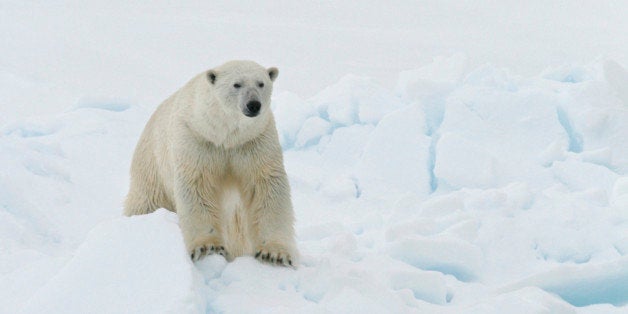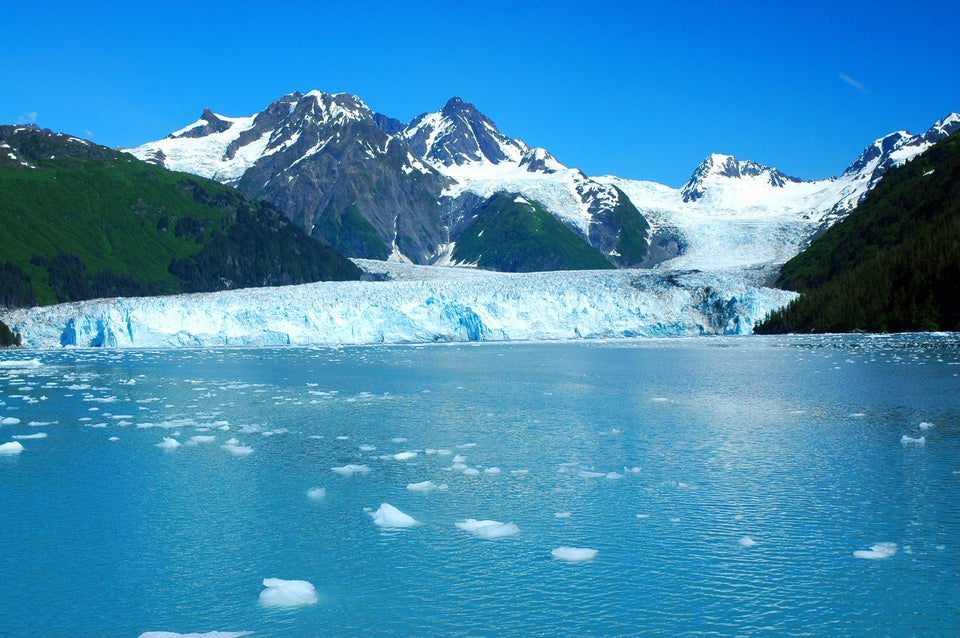
By Laura Zuckerman
July 1 (Reuters) - Imperiled polar bears will see a population crash in most parts of the Arctic Ocean if global greenhouse gas emissions continue at current rates, causing accelerated melting of the sea ice the bruins depend on for survival, U.S. scientists said on Wednesday.
A study led by U.S. Geological Survey (USGS) biologists showed that a worldwide failure to reduce the release of atmospheric pollutants tied to the burning of fossil fuels will likely lead to "a greatly decreased state" for polar bear populations in Alaska and elsewhere, except for an Arctic region north of Canada where summer ice is known to persist longer.
The world's 20,000 to 25,000 polar bears, which can stand as high as 11 feet (3.35 meters) and weigh as much as 1,400 pounds (635 kg), use floating sea ice as platforms for hunting their preferred prey of ringed seals, for mating and to travel vast distances quickly and without expending crucial energy reserves on long-distance swimming, according to the U.S. Fish and Wildlife Service.
The bears were protected in 2008 under the federal Endangered Species Act after U.S. wildlife managers said climate changes threatened the massive mammal's survival in the first such listing of its kind.
USGS ecologists used updated models for predicting greenhouse gas levels under a variety of scenarios in a research paper that concluded that polar bears will face severe challenges in the next several decades even if climate warming stabilizes thanks to of reductions in global emissions.
If releases are not reduced, the number of bears across the vast majority of the Arctic ice cap will sharply fall 25 years sooner than if greenhouse gas rates peak in 2040 and then decline through the end of the century, according to the study.
"Substantial sea ice loss and expected declines in the availability of marine prey that polar bears eat are the most important specific reasons for the increasingly worse outlook for polar bear populations," Todd Atwood, USGS research biologist and lead author of the study, said in a statement.
Atwood and his team found other stressors for polar bears, including oil and gas exploration and hunting by indigenous peoples, had little impact on them compared to the loss of sea ice.
The Fish and Wildlife Service is expected to release for public review a draft plan on Thursday for the recovery of polar bears. (Reporting by Laura Zuckerman in Salmon, Idaho; Editing by Cynthia Johnston and Sandra Maler)

